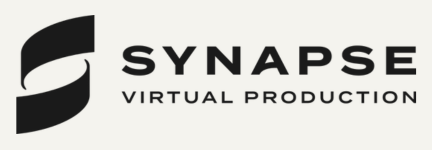
One and Done: When the Perfect Channel Was All You Needed

In today’s advertising landscape, it can feel counterintuitive to resist the pull of omnichannel strategies. Marketers map out campaigns across social feeds, streaming platforms, podcasts, out-of-home and more – fearing that any single-channel approach might limit reach or dilute impact. Yet, as Ahmed Sayer, creative strategist at Cheil Middle East & Africa, observes, there are moments when one well-executed idea, delivered through a single medium, does all the heavy lifting. Drawing on four recent examples – from Dove’s ‘Reverse Selfie’ to GEICO’s oversized glove stunt – this feature explores how a focused campaign can cut through the noise, ignite broader conversations and, in some cases, outperform a multi-touchpoint effort.
Ahmed argues that “attention isn’t just won through reach – it’s won through resonance.” In a world awash with content, audiences have grown weary of adverts popping up everywhere. Against this backdrop, he suggests that marketers should sometimes embrace “less – to deliver more.” By concentrating resources and creative energy on one channel, a brand can craft a message that feels purposeful rather than overwhelming. He identifies three critical elements for a single-channel strategy to work:
- Cultural timing: launching exactly when audiences are receptive.
- Creative strength: telling a story that is simple, human and impossible to ignore.
- Media confidence: placing faith in one platform to carry the campaign’s weight, rather than spreading budgets thinly.
“Within a strong omnichannel strategy, there’s still room for focus,” he says. “Not every campaign needs to start broad – sometimes, a sharp, singular message is what sets everything else in motion.” By contrast, scattering budgets across multiple channels can water down both creative impact and audience recall, especially when consumers tune out oversaturated messaging.
Dove’s ‘Reverse Selfie’
Dove’s 2024 campaign ‘Reverse Selfie’ demonstrates how a single film – distributed on TV and YouTube – can achieve global impact. The 60-second spot shows a young girl repeatedly editing her selfie, each version further distorted, illustrating how social-media pressures warp self-image. Dove chose to anchor the message on mainstream broadcast and YouTube, trusting that the emotional punch would travel organically rather than diluting it across banners, social posts and out-of-home.
The results confirmed this choice: millions of views, extensive press coverage and a renewed wave of trust in Dove’s longstanding ‘Real Beauty’ positioning. As Ahmed points out, “It wasn’t the number of platforms that made the message stick – it was the strength of the idea and the simplicity of its delivery.” Had Dove splintered its budget across Instagram, TikTok and OOH, the film’s emotional stakes risked being overshadowed by competing visuals.
In the context of the ever-mounting number of societal threats to the self-esteem of young women and girls across the world, ‘Reverse Selfie’ felt less like an overt sell and more like a cultural intervention – an anchoring moment that made the brand’s ethos feel both urgent and authentic.
Lessons learned
- Lean into cultural moments: Align your single channel with a broader conversation to boost relevance.
- Trust the idea: One compelling film or creative execution can travel further than a scattergun approach.
- Avoid dilution: Splitting across too many channels can weaken the message and reduce viewer recall.
Coupa’s MLB Play
In B2B marketing, it is rare to see a procurement platform hitch its fortunes to Major League Baseball. Yet Coupa – a procurement and spend management solution – did exactly that. Eric Perko, founder and chief executive officer of Apollo Partners, explains that Coupa’s core audience of finance and procurement executives are avid baseball fans – an insight that competitors had largely overlooked. “We knew that presenting Coupa alongside mass-reaching, culturally relevant moments could scale exposure outside of the usual B2B environments,” Eric says.
After sponsoring the World Series in 2021, Apollo secured a seven-year partnership with the New York Yankees. Through in-stadium signage, a bespoke feature on every radio broadcast, organic social posts from the Yankees’ channels and branding of the suite level at Yankee Stadium, Coupa’s message became a constant presence at every game. Rather than serving banner ads on LinkedIn or trade publications, Coupa surrounded decision-makers with its brand in the stadium – if they weren’t watching on TV, they saw Coupa on the outfield wall or heard the name on the radio broadcast. Had Coupa spread its budget across paid search, display and niche trade outlets, its message likely would have been lost amid generic tech ads targeting the same audience.
The metrics speak volumes. Tom Gavin, then senior vice-president of corporate marketing at Coupa, remarked, “We were blown away with the results of what we were able to achieve.” During baseball season, traffic to coupa.com rose by double digits, and engagement jumped by 176%. In a B2B context where attribution is notoriously murky, the programme delivered clear ROI, proving that going all-in on one medium can produce outsized returns.
Lessons learned
- Match audience habits: When your target demographic has a dominant media habit, tap into it rather than chasing generic channels.
- Prioritise impact over saturation: One memorable brand placement at a key cultural moment can outdo dozens of standard ads.
- Simplify attribution: A single channel can make it easier to measure lift, especially in B2B.
Meet Boston and the BBC
Tourism marketing often juggles two objectives: building an emotional connection to a destination and driving immediate bookings. For Meet Boston – the city’s destination marketing organisation – partnering exclusively with BBC Travel enabled the city to achieve both aims with one focused channel. Derek Welch, vice-president of media at Allen & Gerritsen, explains that by reducing the number of publisher partners and increasing spend with each, Meet Boston negotiated a bespoke programme rather than an off-the-shelf advert. “BBC’s 50 million North American readers – people with a love of travel and high disposable income – made it the perfect fit,” Derek says.
Rather than commissioning advertorials that would vanish after a short campaign, Meet Boston secured a series of spotlight articles written by a lead BBC Travel journalist and published as evergreen content on BBC Travel. This approach “eliminated the scepticism that can accompany ‘custom content’, ensured the articles live beyond campaign dates, and boosted SEO performance – with many articles remaining on Google’s first page.”
To amplify reach, Allen & Gerritsen layered native display and social tactics – achieving 100% share of voice on Meet Boston’s display ads and embedding an organic hyperlink at each article’s end, capitalising on immediate interest. Over 600,000 unique travellers spent an average of two minutes reading the series – nearly twice the benchmark for BBC editorial. Those who clicked through to MeetBoston.com lingered three times longer than visitors from other campaigns, and the effort drove hundreds of hotel bookings at a return on ad spend exceeding US $37.
Lessons learned
- Leverage editorial trust: Embedding your message within a respected publisher can boost engagement and SEO longevity.
- Avoid custom-content scepticism: Cultivating genuine editorial partnerships reduces the “advertorial” stigma.
- Focus for permanence: One well-chosen publisher can deliver traffic and bookings long after other campaigns have ended.
GEICO’s All-Star Week Glove
Sometimes, a single stunt can eclipse the biggest media buy. During the 2024 Major League Baseball All-Star Week, GEICO sought cut-through despite not being the official presenting sponsor. Dane Jensen, senior vice-president of partnership strategy at Momentum Worldwide, describes how the agency leaned into fan behaviour rather than traditional paid media: “Rather than try to outspend presenting sponsors for media exposure, they developed a unique experience that engaged fans inside the stadium at a peak moment.”
The result was the GEICO ‘Get More Glove’ – an absurdly oversized blue glove handed out to 7,000 fans to wear during the game. The concept was simple: allow fans to catch more foul balls, win prizes and appear on screen, placing GEICO’s message directly into the emotive moment of a home run. As the stands filled with bright blue gloves, every camera cut to the crowd doubled as an on-screen ad.
Dane emphasises that the stunt did more than just brand visibility; it “helped fans tangibly feel the value GEICO brings by giving fans the opportunity to experience more moments of excitement, more reasons to cheer, more chances to get on TV, and more ways to get rewarded.” In total, the programme yielded 384 in-broadcast placements – equivalent to ten minutes of bonus airtime – and generated over 86 million impressions. In essence, GEICO secured the clout of a presenting sponsorship without paying for it.
Lessons learned
- Embed in fan behaviour: When you align with a moment fans already care about, your brand becomes part of the experience.
- Earned airtime can outvalue paid: A clever on-site activation can generate as much – or more – exposure than a paid sponsorship.
- Think beyond sponsorship fees: You can achieve ‘presenting sponsor’ visibility through smart experiential tactics rather than big-ticket buys.
When Single-Channel Isn’t Enough
Of course, a one-channel strategy isn’t a universal prescription. If your target audience lacks a dominant media habit, if the creative idea isn’t strong enough to stand alone, or if there’s no clear cultural moment to anchor to, then a broader approach may be warranted. In those circumstances, an integrated, multi-touchpoint strategy still has its place – especially for brands with highly diverse audiences or complex launch objectives.
Why It Works – and When to Expand
Across these four case studies, a clear pattern emerges: whether it’s a beauty message, a B2B software offer, a city tourism push or an insurance stunt, each campaign found a single, resonant channel aligned with audience behaviour and cultural context. By resisting the urge to “be everywhere,” these brands achieved deeper engagement and clearer attribution than a broad, multi-touchpoint strategy might have allowed.
That said, none of the experts dispute the value of integrated thinking. In practice, many of these campaigns eventually flowed into broader ecosystems: Dove’s film sparked social conversation; Coupa’s stadium exposure was supported by digital follow-ups; Meet Boston’s articles drove downstream display and social; and GEICO’s glove generated organic user-generated content and earned media. What each team did differently was begin with intense focus – identifying “where people are most ready to hear” the message, to borrow Ahmed’s phrasing – and trusting that one strong channel would spark momentum for everything that followed.
For marketers debating whether to buckle under the weight of omnichannel pressure, these examples offer a lesson in restraint. As Ahmed reminds us, “As marketers, it’s not just about being everywhere. It’s about being impactful somewhere – and letting that moment carry the weight it deserves.” In a noisy marketplace, that singular, impactful moment can become the fulcrum that tilts brand perception, drives KPI-backed results and fuels broader omnichannel success.















